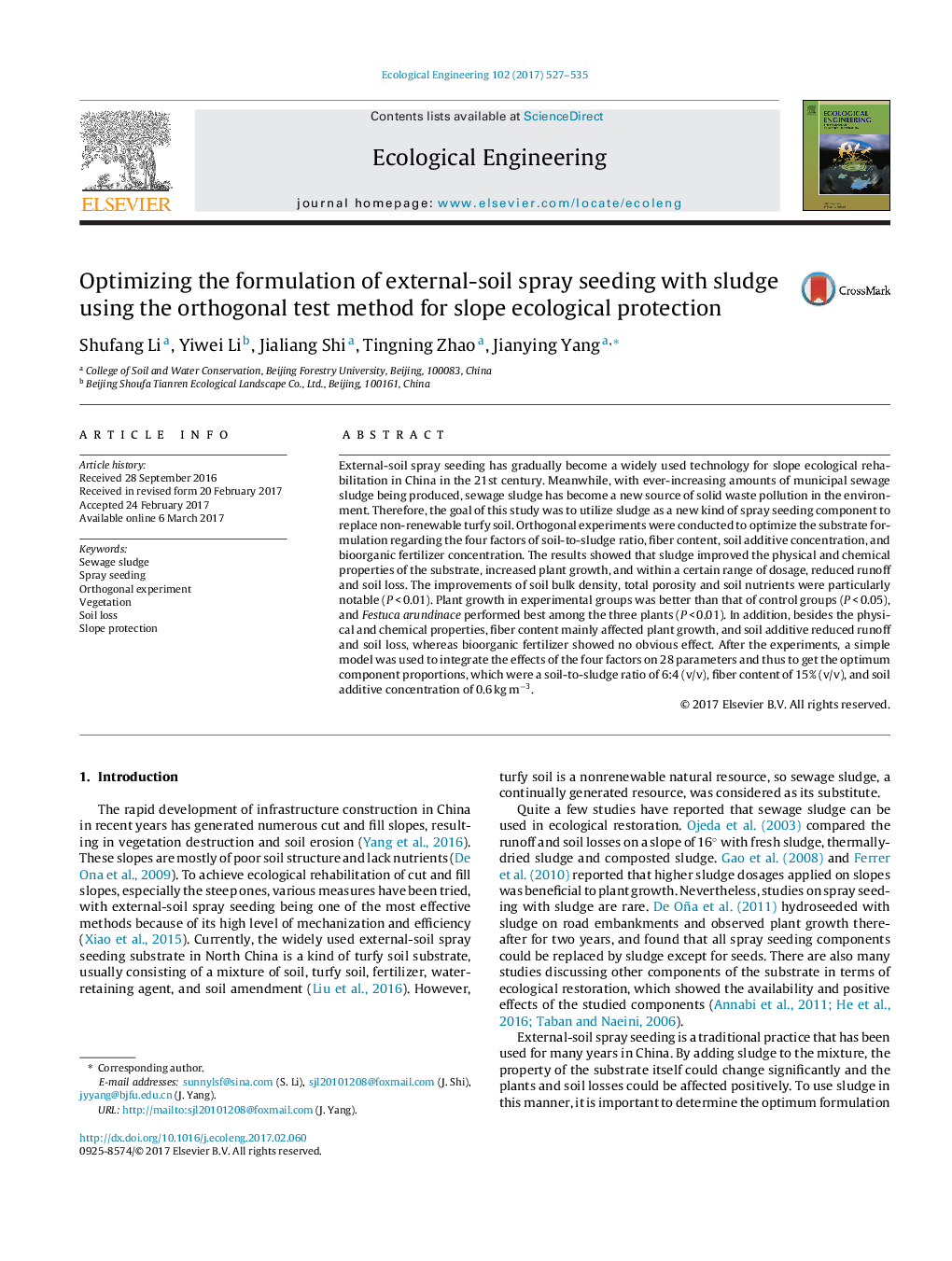| کد مقاله | کد نشریه | سال انتشار | مقاله انگلیسی | نسخه تمام متن |
|---|---|---|---|---|
| 5743798 | 1617997 | 2017 | 9 صفحه PDF | دانلود رایگان |
- We demonstrated that sewage sludge can be an alternative to the turfy soil currently used in external-soil spray seeding.
- We explored the effects of spray seeding components (sludge, fiber, soil additive, and bioorganic fertilizer) on soil properties, plant growth, runoff, and soil loss.
- The optimized component proportions in the spray seeding substrate are soil-to-sludge ratio of 6:4 (v/v), fiber content of 15% (v/v), and soil additive concentration of 0.6Â kg mâ3.
External-soil spray seeding has gradually become a widely used technology for slope ecological rehabilitation in China in the 21st century. Meanwhile, with ever-increasing amounts of municipal sewage sludge being produced, sewage sludge has become a new source of solid waste pollution in the environment. Therefore, the goal of this study was to utilize sludge as a new kind of spray seeding component to replace non-renewable turfy soil. Orthogonal experiments were conducted to optimize the substrate formulation regarding the four factors of soil-to-sludge ratio, fiber content, soil additive concentration, and bioorganic fertilizer concentration. The results showed that sludge improved the physical and chemical properties of the substrate, increased plant growth, and within a certain range of dosage, reduced runoff and soil loss. The improvements of soil bulk density, total porosity and soil nutrients were particularly notable (P < 0.01). Plant growth in experimental groups was better than that of control groups (P < 0.05), and Festuca arundinace performed best among the three plants (P < 0.01). In addition, besides the physical and chemical properties, fiber content mainly affected plant growth, and soil additive reduced runoff and soil loss, whereas bioorganic fertilizer showed no obvious effect. After the experiments, a simple model was used to integrate the effects of the four factors on 28 parameters and thus to get the optimum component proportions, which were a soil-to-sludge ratio of 6:4 (v/v), fiber content of 15% (v/v), and soil additive concentration of 0.6 kg mâ3.
280
Journal: Ecological Engineering - Volume 102, May 2017, Pages 527-535
